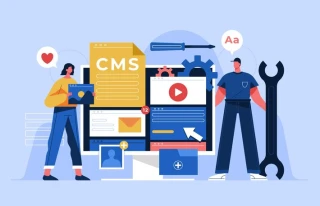Table of Contents
- Web Designer vs Web Developer
- The Role of a Web Designer
- Main Responsibilities of a Web Designer
- Aesthetics, UX, and UI Design
- Tools and Software Used by Web Designers
- The Role of a Web Developer
- Main Responsibilities of a Web Developer
- Front-end, Back-end, and Full-stack Development
- Programming Languages Used by Web Developers
- Collaboration Between Designers and Developers
- Choosing Your Path
The roles of web designers and web developers are significantly different, and understanding these distinctions is essential to avoid misunderstandings with clients.
This post aims to clarify misconceptions and help both clients and aspiring professionals grasp the essence of these roles.
Whether you're a client seeking the right freelancer for a web design project or a professional looking to enter the industry, this guide will provide a clear understanding of web design and web development roles to aid decision-making.
Let's delve into it.
Web Designer vs Web Developer
The simplest analogy to understand the difference is to liken web designers to architects and web developers to engineers.
Web designers focus on creating the visual layout and user experience, akin to architects designing a building. Web developers, like engineers, construct the functional website using code and frameworks based on the design.
Both roles are equally important, and some professionals excel in both.
The Role of a Web Designer
When you visit a website, everything you see is crafted by a web designer.
Web designers are responsible for creating the visual layout of a website, ensuring information is presented in an organized manner for optimal user experience.
Main Responsibilities of a Web Designer
- Researching and understanding website requirements
- Ensuring responsive design for desktop and mobile
- Integrating a content management system
- Enhancing design for user experience
- Creating wireframes and mockups
- Communicating with clients and incorporating feedback
Aesthetics, UX, and UI Design
Web design involves more than arranging elements on a layout; it encompasses creating a satisfying user experience. Aesthetics, user experience, and user interface design are critical components.
Tools and Software Used by Web Designers
Designers utilize various tools for layout creation, wireframing, and concept designs. Popular tools include Sketch, Figma, Adobe XD, Photoshop, and InDesign.
The Role of a Web Developer
Web developers breathe life into the designs crafted by web designers. They write the code necessary to make website elements functional.
Main Responsibilities of a Web Developer
Web developers are responsible for website and web app development, maintenance, and ensuring compatibility with different browsers. Some specialize in back-end development, while others handle front-end development or both.
Front-end, Back-end, and Full-stack Development
Front-end developers focus on the visible parts of a website, while back-end developers handle server-side functionalities. Full-stack developers are proficient in both aspects.
Programming Languages Used by Web Developers
Web developers master languages like PHP, Python, Swift, and Ruby, along with HTML, CSS, and JavaScript, essential for all developers.
Collaboration Between Designers and Developers
Both roles collaborate closely to build websites effectively. Understanding each other's roles fosters better communication and respect in collaborations.
Choosing Your Path
Your preference and interest should guide your choice between web design and web development. Pursue web design if you're passionate about aesthetics and user experience, and opt for web development if you enjoy coding and technical challenges. Full-stack development combines both aspects.
Consider advancements in AI but don't let them deter you from pursuing your career. Incorporate AI tools to enhance efficiency in your work.


















 +91
+91